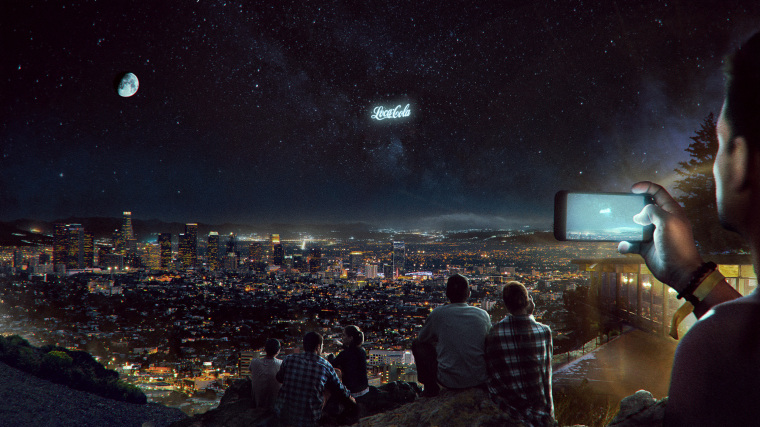Advertising In Space
 |
| Universe Today -- space and astronomy news |
"New ages demand new gods."
"It was the first time somebody made entertainment in space ... and advertising is part of entertainment."
"People hate me because they think in two years the whole sky will be covered in advertising."
Vlad Sitnikov, CEO, StartRocket, Russian start-up
"It might be a good starting point to re-examine the whole nature of regulation of space activity."
"We know that the use of outer space for positioning nuclear weapons is prohibited, but there is no such prohibition on the placing of giant billboards [in space]."
Christopher Newman, professor of space law, Northumbria University, Britain
"Advertising in space seems to be simply a wasteful and expensive way of ruining the view of the night sky."
"Light pollution on the ground makes it difficult enough already to see the sky -- the stars and the Milky Way -- from many locations, and advertising in space is a way of destroying that beautiful vista from the remaining unsullied sites."
Robert Massey, deputy executive director, Britain's Royal Astronomical Society
 |
Yet another intrusion into the night sky. Who in their right mind would look forward to gazing upward at night to search the sky for identifiable stars and constellations, revelling in the majesty of the view and then shockingly coming across the logo of a soft drink manufacturer or a fast-food conglomeration, moving sedately along the Milky Way. Transforming the magical to the pedestrian in one fell swoop. That is, should StartRocket have its way in plans to place billboards in space.
The plan is to develop a system whereby hundreds of tiny satellites can be manipulated to form a massive commercial display visible from Earth. This represents the latest of ventures following musing about asteroid mining and space hotels, all visualized as what the future holds in mining space for its commercial potential. Astronomers have reacted to the proposal unleashed in mid-January with predictable alarm.
And the question is now raised whether it is high time that some universal standards be put in place by global agreement to shelter space from such intrusions. Regulations to be agreed upon and observed that would constrain any such future exploitation of space beyond the mess humankind has already made to transform it into a giant garbage dump of dead satellites and other human-responsible space debris.
The brilliant hypothesis that space could be used to advantage advertising, assembling clients who wouldn't mind paying a hefty invoice for the privilege of their messages reaching around the world came to advertising expert Vlad Sitnikov in the wake of the rocket propulsion company Rocket Lab launching a disco ball named Humanity Star into orbit, which remained visible to the human eye for a period of months.
 |
StartRocket, confident of its ability to blueprint a suitable technical plan, has teamed with experts from a Moscow private university, Skoltech where the team plans to place 200 tiny satellites -- CubeSats -- at an altitude of some 500 kilometres in the lower orbit of Earth by 2021. Each satellite equipped with a sun-reflecting sail would be designed to fly in close companionship with one another to create pixels of a gigantic screen to be switched on and off in displaying words or logos.
The estimated investment for production is expected to exceed $150-million. On the other hand it would cost about $200,000 for clients to contract for eight hours of advertising. A promotional video was released in early January and since then thousands of calls have come in from abroad to StartRocket, including a rough dozen from potential clients; while many other messages reflect the opinions of people opposed to the idea.
Each display would appear the size of a half moon, visible for six minutes at a time, from anywhere in the world. On the other hand, to derive the most potential from the advertising, the plan is to target large population bases where light pollution from cities is high to begin with. Dusk or dawn being the preferred times for display, when people tend to be about in the streets, according to Mr. Sitnikov, in the interests of the bottom line.
The 1967 Outer Space Treaty drafted during the Cold War, focuses on peace and exploration, mentioning nothing about advertising. So, from a legal standpoint, there doesn't appear to be much that can be done about the plan to invade the inner ring of Earth's atmosphere as things stand, save an immediate and concentrated campaign on the part of astronomers and lawmakers to ensure that this is an idea quickly nipped in the satellite bud.
 |
| A screen capture from a promotional video on StartRocket’s website. Image Credit: StartRocket. |
"Launching art projects like this with no commercial, scientific, or national security value seems unwise…Space is getting increasingly crowded. There are over 20,000 objects with orbits in the official public catalog maintained by the U.S. Air Force."
"Less than 10 percent of those objects are active satellites—the rest are dead satellites, old rocket bodies and parts of spacecraft."
University of Michigan astronomy professor Patrick Seitzer
Labels: Advertising, Controversy, Earth, Orbit, Satellites

0 Comments:
Post a Comment
<< Home